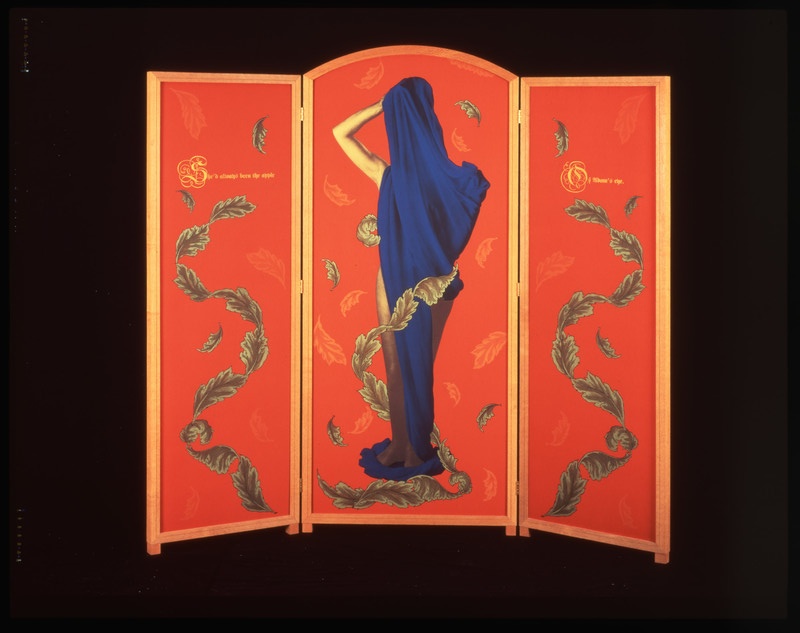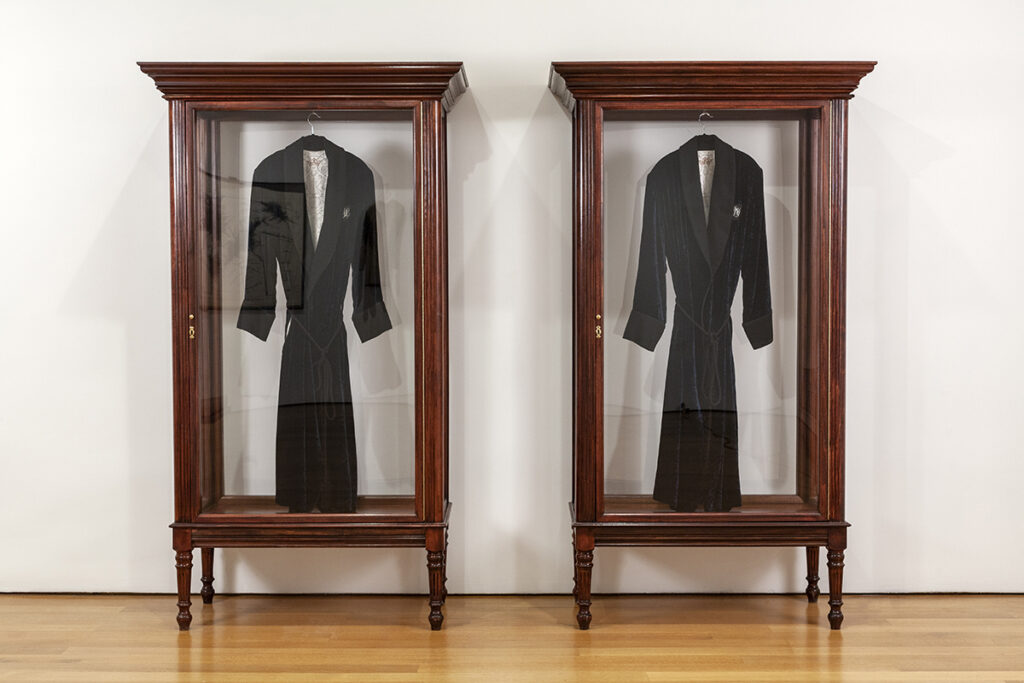Carrie Mae Weems retells the biblical story of Adam and Eve in The Apple of Adam’s Eye. Using a folding screen as her form, Weems worked with FWM to silkscreen print a central image of a shrouded woman flanked by side panels depicting a decorative, serpentine vine. Gold text is elaborately embroidered and reads: “She’d always been the apple/Of Adam’s Eye” (front panels) and “Temptation my ass, desire has its place, and besides, they were both doomed from the start” (on reverse).
The central figure shields herself, yet also reveals part of her body. There is sexual tension in this work, which Weems has acknowledged: “ . . . there is . . . great desire, seduction, sexual charge and a point to be made—you know, stuff that makes the world go round” (Projects: Carrie Mae Weems, Museum of Modern Art, New York, 1995). Weems continued on to say that this work is about “how both men and women are accomplices in their own downfall, in their own oppression, in their own victimization.” The sculpture—like much of Weems’ work—undulates between the larger social implications between the sexes and a very intimate, interpersonal interaction.
Weems often exhibits The Apple of Adam’s Eye with the wallpaper Looking High and Low. The pattern comes from the end sheets of George Bernard Shaw’s 1933 book, Adventures of the Black Girl in Her Search for God, which introduces race to the retelling of the creation myth.
The Apple of Adam’s Eye became a central element in Carrie Mae Weems’ exhibition at FWM in 1993, and in subsequent exhibitions including Ritual & Revolution, her 1998 exhibition for the Dakar biennial exhibition, which has traveled extensively.


